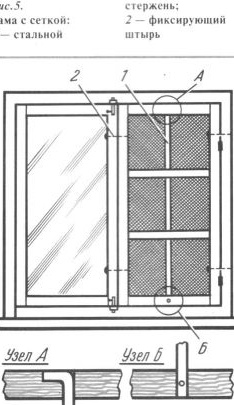Spring soon. Wake up after hibernation summer residents, gardeners and gardeners — in short, agrarians. And if I did not intervene with my advice at the right time - it does not matter. Firstly, it is easy to do without them, secondly, spring happens every year, and thirdly, advice does not ask for food and does not deteriorate. I think that my advice has long been known to the bison of summer cottage technology, but after all, beginners also acquire cottages and vegetable gardens. With them I would like to share some country tricks.
Sowing and planting is a rather laborious affair. I will not speak here about the breeding of specific representatives of vegetables and aromatic herbs. It is clear that the seeds of different plants are differently embedded in the soil. I only note that "mass" sowing is less time-consuming than planting seeds or sprouts in the soil one at a time. But sowing has a big minus. After it, it often turns out where it is thick and where it is empty. And from here, additional work: thinning, replanting or milking. And if the marriage turned out in the middle of the country garden, then to fix it, you need permutable scaffolding.
Planting one or two grains is also a grueling job. Finish the bed - the back will dry out. And when toilet paper began to be enough for its direct use, we began to use it in gardening technology, that is, we began to paste on it with starchy jelly seeds of beets, carrots, radishes and other crops.
We do it like this. On the table we put the ends of several rolls, leaving the rolls themselves lying on the floor. In the dishes we mix the seeds with paste and spread a thin layer on a cutting board, and with tweezers on paper. As the glue dries, we wrap the paper with seeds again in a roll. Before sticking the seeds on paper, we store them in plastic bags in the snow. Then we dry, sieve and in February we paste on paper. It is not difficult to spread the ribbons along the bed, sprinkle with earth - all the more.
And one more trick. It’s like, but I like a beautiful creature made of live chocolate and having a perfect aerodynamic shape. This creature is a bear. I repeat, this creature is very beautiful, but, unfortunately, merciless to plants, and it is difficult to fight it. What people just do not come up with, if not to get rid of it, then at least protect the plants from this robber. Watching the habits of the bear, I noted that her behavior is not without common sense.It does not run on the surface, unless you pull it out of the soil, and also does not move to great depths. It, like a torpedo, goes in the surface layer of the soil, sometimes leaving even the visible “breakers" of the earth.
Of course, her behavior is understandable. At a depth of fairly dense land. Crawling on the surface - please the ravens for a snack. The surface layer of the earth, as a rule, is loose, the bear is easy to move in it, and its favorite root system of plants is most developed here. However, if an inedible obstacle (in the form, for example, a tin can) is encountered on the way of the bear, it protrudes 3 to 4 cm above the surface of the soil and extends 5 ... 6 cm into it, then the bear does not have the “intelligence” to crawl this obstacle on top or crawl under it. She has one rule - to bypass this obstacle.
On this “slip” of the bear, we built plant protection. Seedlings began to be planted in cans from under beer, water, canned food, having previously removed the bottom. The walls of the jar do not interfere with the development of the stem and root system of the plant, but they withstand the siege of the bear. The peaceful coexistence of the bear and plants lasted two seasons, then they sold the cottage, and I did not have time to finish the experiment. And I was going to find out: will plastic barriers stand against the bear, will it not take them for an edible delicacy?
If someone has already tried plastic armor, respond, if not, try and write about the results of the war with this charming creature, which people mercilessly beat because they cannot read and live according to the laws prescribed by Nature. And then I would have stuck a small plaque in the garden with the inscription: “Medvedka, under the threat of execution, is not allowed!” - and it's up to the end.
________________________________
Not only bears are bothering us at the dacha, there are critters and worse, albeit smaller ones. These are insatiable bloodsuckers: mosquitoes and midges. Once I wrote to my granddaughter a poem, a fairy tale, which gives a true description of the war of summer residents with all this gnawing, sucking, stinging evil spirits. Maybe these lines are not entirely appropriate here, but I will risk it.
And the holy war is coming
Wickedness rushing after the army,
No matter how they kill her,
And she lives again.
From impotence - the sky into a cage, Like a submarine under water, A bear floats under the ground, Cuts the roots like a scythe.
Like flakes of black foam
The cat falls from heaven.
Mosquitoes turning on sirens,
Rushing with a spear at the ready ...
Granddaughter really liked mosquitoes with a spear. But back to the prose of life. In order to somehow protect the home from a mosquito invasion, gauze, wire, thread, plastic nets are stuffed onto the windows and window openings. Steel nets rust and collapse, plastic under the influence of the sun decompose and crumble. And one more inconvenience of the nets so strengthened - the muffled nets are quickly covered with soot, dust, greasy, and it is difficult to wash them.
After going through the entire range of nets, I was convinced that the best nets are from stainless wire, horsehair or kapron threads. They are durable, do not corrode, are not afraid of the sun and wind. The surface of their veins is smooth, so the mesh is easily washed with a hair brush with a soapy solution. Moreover, I make the fence nets removable, because in winter there is no need to stick them in the windows and doors.
When the mosquito season begins in the kitchen window, I remove one hinge of the window unit from the hinges and put a frame with a mesh in its place (Fig. 5). The frame is connected from wooden bars with a section of 40 x 30 mm. From top to bottom in the middle of the frame, a steel rod with a diameter of 5 ... 8 mm was passed through the bars of the crossbars. This rod is a guard against nightly two-legged uninvited guests - taty for whom the grid is not an obstacle. In the window opening, the frame is fixed with wire pins or large nails that freely enter the corresponding holes in the frame and in the window frame.
For the balcony aperture, I made the same removable door frame, which for the summer is mounted on the door frame on the side of the balcony with removable hinges and opens inside the balcony.
For ten years of operation, not a single wrinkle appeared on the frames. They look like the first day of creation. At one time, I wrote in "Little Tricks" how to kill a mosquito without dirtying the ceiling or wall. Now we have got rid of this problem, except sometimes, when we forget to close the door to the balcony, the mosquito with his spear jumps in and hides. And as soon as we fall asleep, he will not slow to use it.
But there is one drawback to these grids. If you accidentally punch a hole in them, then to sew it up is a dead matter. But there was a way out. Around the hole with a brush, apply a layer of waterproof glue (“Moment”, “Phoenix”, “Contact”, “Mars” other). Let the layer dry, and then apply the following layers until the “wound” is healed. I keep the frames under the bed.


